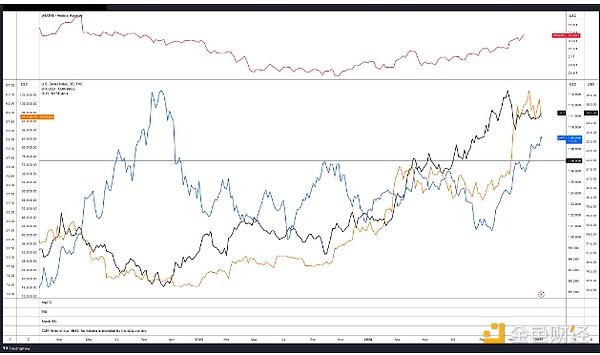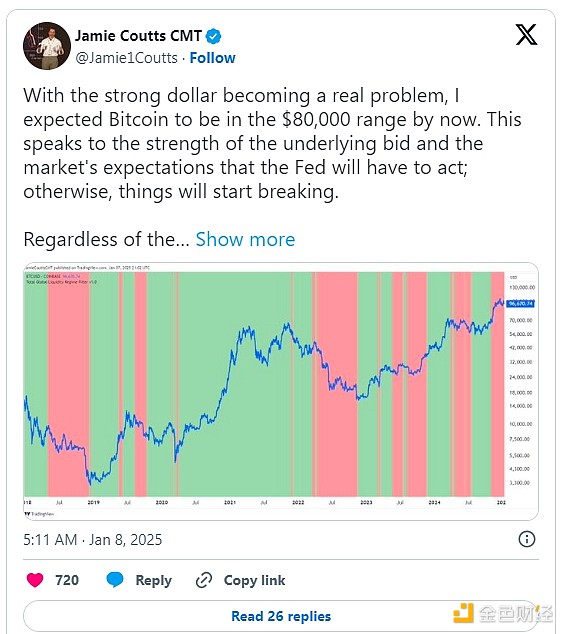Author: Big Smokey, CoinTelegraph; Compiler: Wuzhu, Golden Finance
The cryptocurrency market plunged for the second consecutive day as the U.S. dollar index (DXY) chased new highs amid rising U.S. Treasury yields and investor concerns about the Federal Reserve's monetary policy plans.
Although the dollar index opened the week down 0.92% before Bitcoin suddenly rebounded to $102,000, the index subsequently reversed course and reached 109.37, its highest level since November 2022.
The market also reacted negatively to the surge in U.S. Treasury yields, with the 10-year Treasury yield breaking through 4.7% and the 30-year Treasury yield rising to 4.93%. While the catalysts for the rise in yields are varied and complex, they essentially reflect market participants’ concerns that inflation will remain high as President-elect Donald Trump’s economic policies threaten to widen deficits.
In short, the market is beginning to price in the possibility of an increase in long-term U.S. debt, while the incoming Trump administration’s policies are expected to push inflation higher even as they boost economic growth.
As expected, Bitcoin prices reacted negatively to the strength of the U.S. dollar index, with analysts concerned that yield curve control will once again become a hot topic.

DXY vs. BTC 3-day chart. Source: TradingView
BTC fell to an intraday low of $92,500, and analysts warned that prices could continue to fall in the short term if the $90,000 support level fails to hold.
Burkan Beyli, co-founder of Biyond, noted:
“If Bitcoin falls below $94,000, the next target in the next five weeks is $81,000. To move down, Bitcoin must close below $95,180 next week. Next week, we will release CPI, so the bears may show their cards.
Overall, I am bearish on cryptocurrencies in the short term (4-5 weeks) and then very bullish as I expect a correction in the US dollar index after Trump takes office.”
Jamie Coutts, chief cryptocurrency analyst at Real Vision, seems to agree with Beyli, believing that
192);">
The recent strength of the US dollar index has less to do with the expected liquidity expansion and the incoming Trump administration's pro-crypto stance.
 Kikyo
Kikyo







